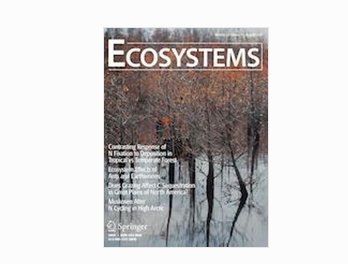Muskoxen Modify Plant Abundance, Phenology, and Nitrogen Dynamics in a High Arctic Fen
New publication by Jesper Bruun Mosbacher, Anders Michelsen, Mikkel Stelvig, Håvard Hjermstad-Sollerud, Niels Martin Schmidt

Abstract:
Herbivores are key drivers of vegetation dynamics in most ecosystems. However, the effect of high arctic herbivores on vegetation dynamics throughout a growing season is not well understood. In this study, we examine the impacts of a large dominant herbivore in the tundra ecosystem, the muskox, Ovibos moschatus, using exclosures established in a fen in high Arctic Greenland. Using weekly sampling throughout the growing season, we quantified the effects of muskox exclusion on aboveground plant biomass and on concentrations and pools of carbon and nitrogen, and explored the timing of peak biomass and nutrient pools. Excluding muskoxen profoundly changed plant abundances and dynamics of the fen, with more than a doubling of aboveground plant biomass and carbon and nitrogen pool sizes. Specifically, large increases in mosses and litter were observed, while graminoid biomass did not change significantly with exclusion of muskoxen. Excluding muskoxen advanced the peak of plant biomass, but also led to a more rapid decline, resulting in an earlier and shorter period of maximal plant biomass inside the exclosures. The largest impact of muskoxen on the arctic fen ecosystem seems to be through their trampling effects on the moss layer, which likely mediated most of the observed changes. This study demonstrates how quickly an ecosystem may respond to changes in the abundance of large herbivores and highlights their pivotal role in modifying vegetation dynamics and nutrient cycling in tundra ecosystems.
